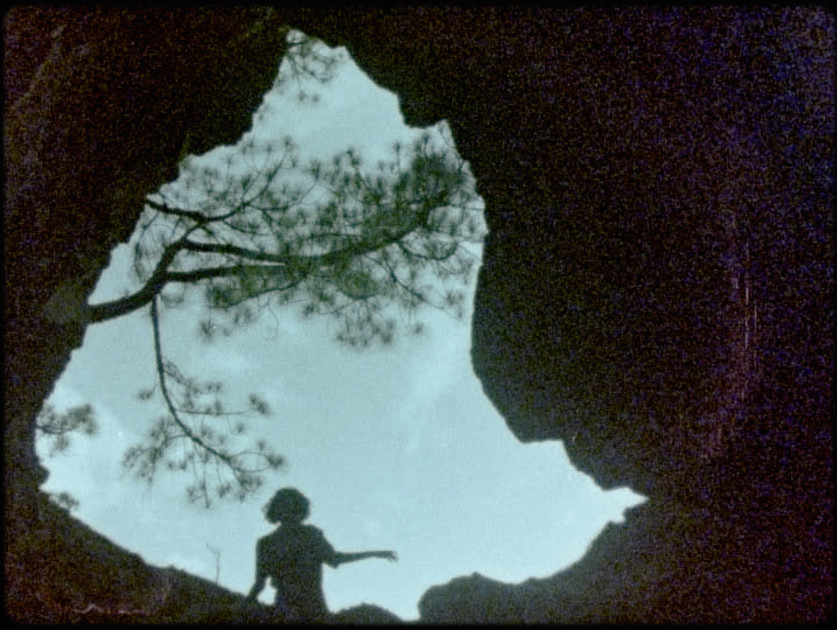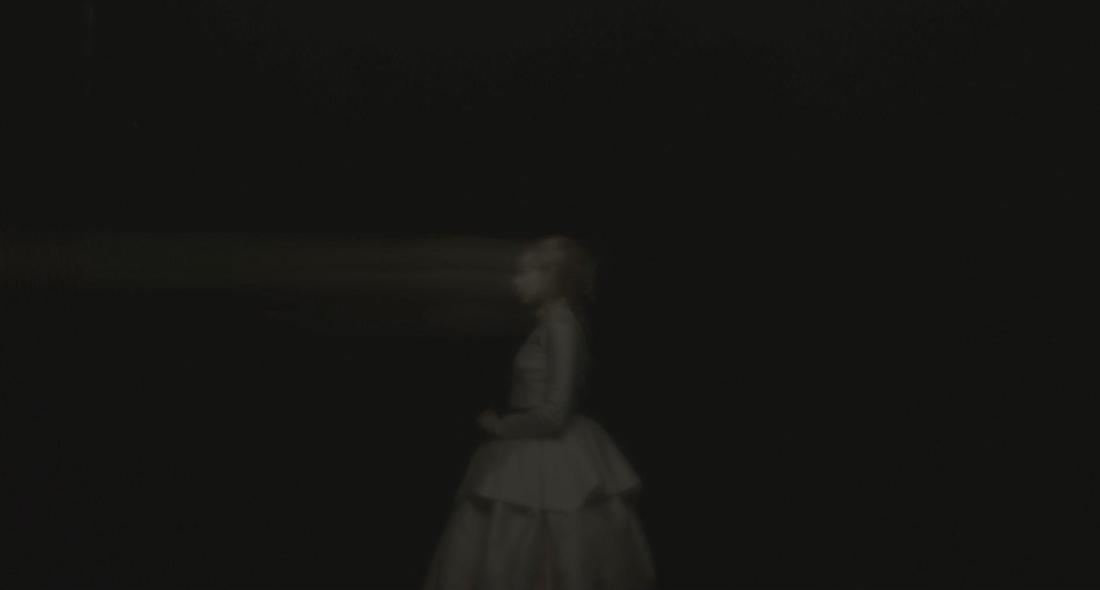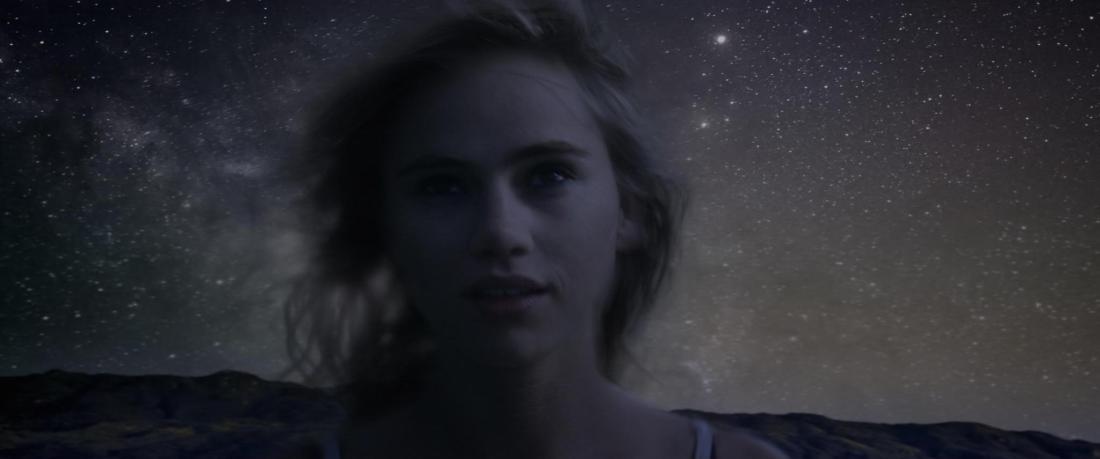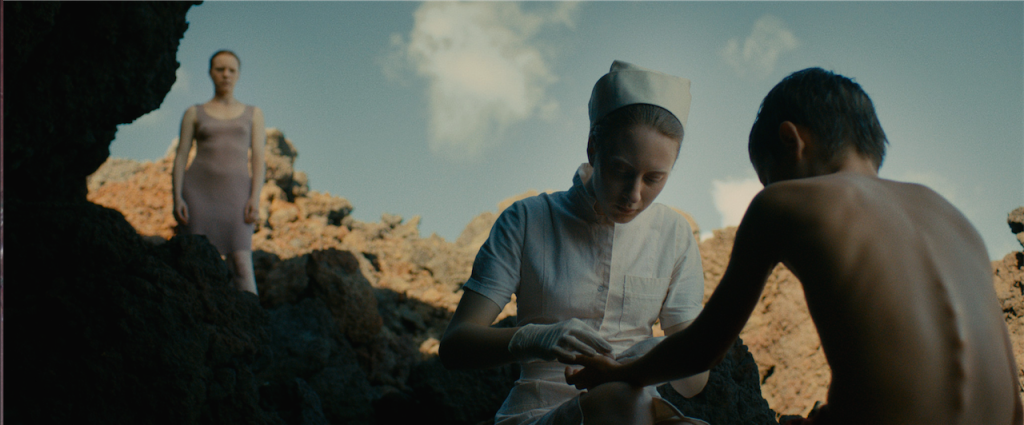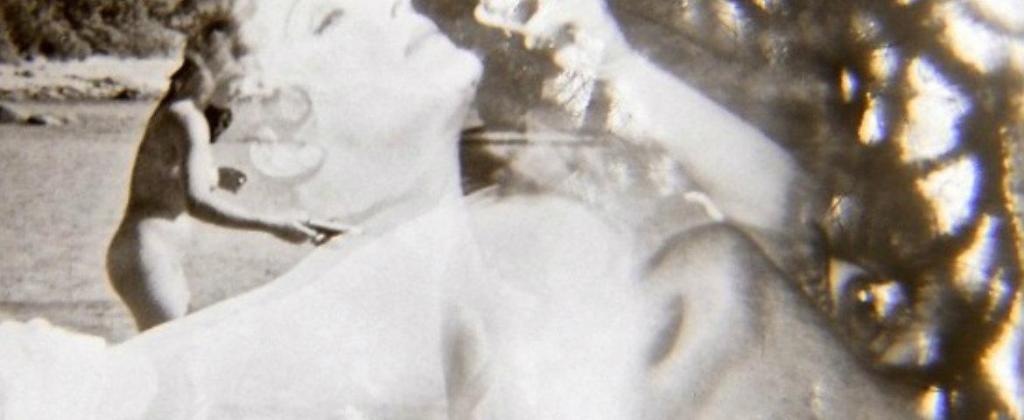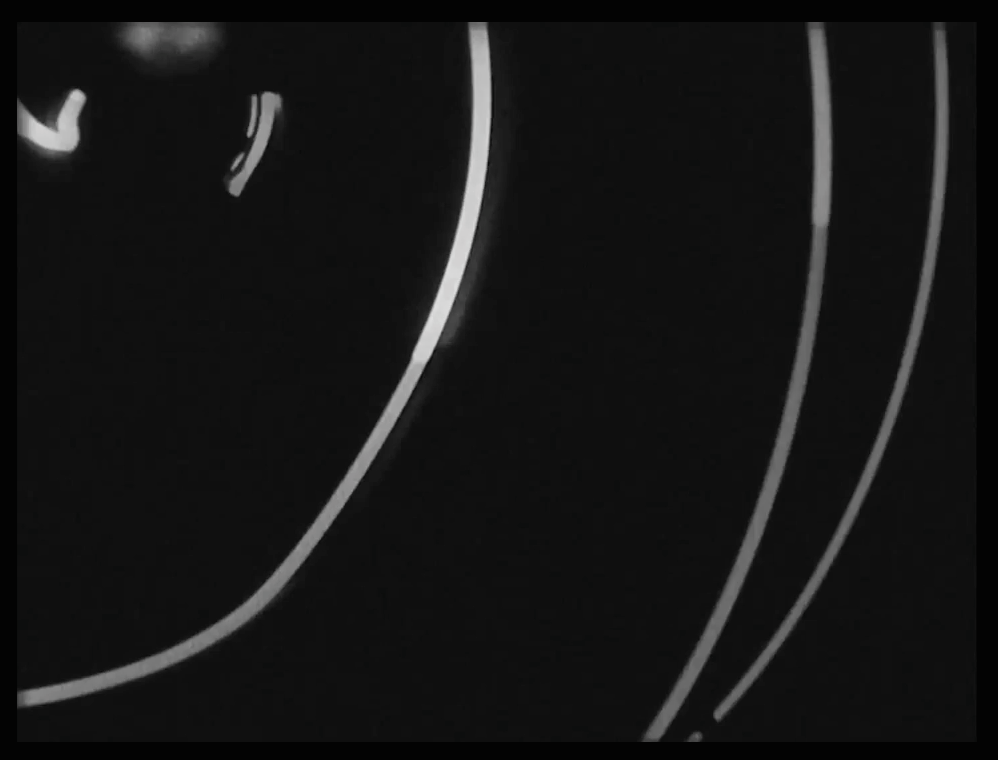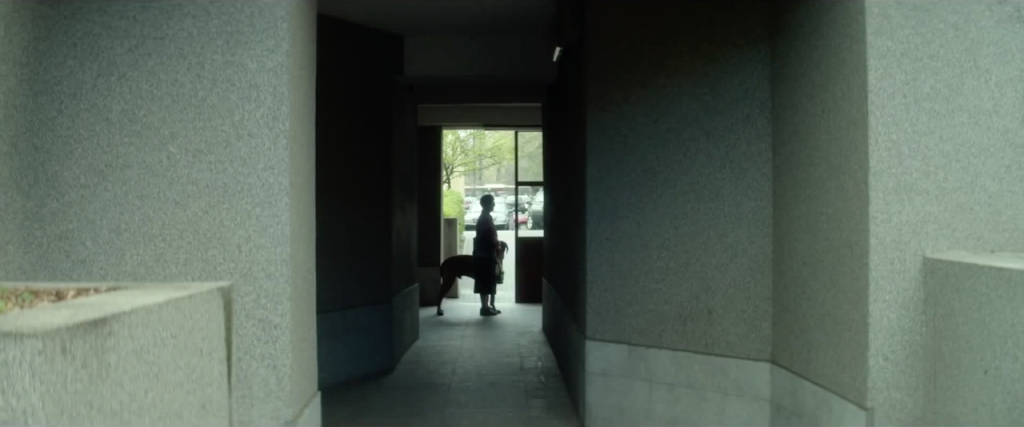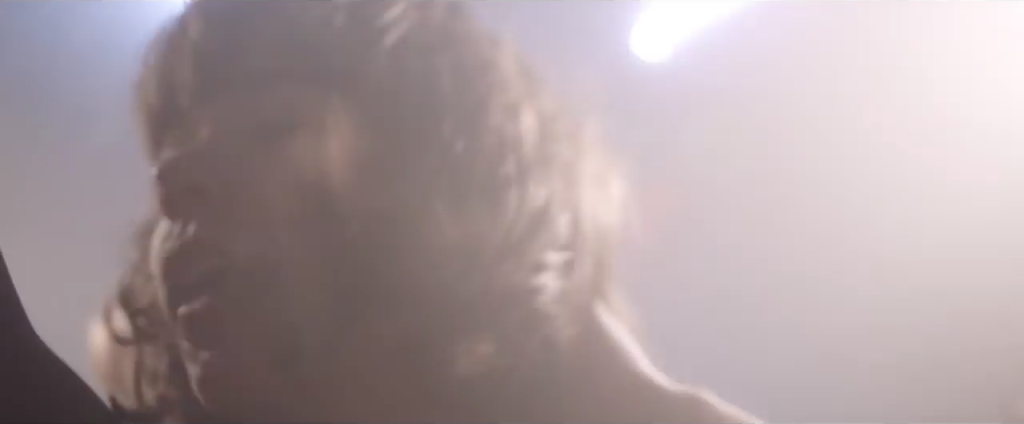At the 2017 Toronto International Film Festival I was fortunate to be able to see my three most anticipated films -which turned out to be my three favorites. What that says about me, who knows: Bruno Dumont has grown on me tremendously (as I think he does on most people), I’ve admired Andrei Zvyagintsev since 2004 when I saw The Return on a whim in a cinema in New York knowing nothing about it, and Hélène Cattet and Bruno Forzani seem to have sensibilities similar to my own when in comes to mid-century genre cinema (it was tiresome listening to industry people refer to this as ‘elevated genre’ throughout the festival though). I knew what to expect, and they delivered. The real surprises for me, though, have always been with the Vanguard and Wavelengths programs. TIFF eliminated Vanguard this year, which left us with ‘elevated genre’ films or works that often straddle the line between ‘arthouse’ and exploitation awkwardly placed in the Discovery and Contemporary World Cinema programs. As a result, I noticed many more walkouts than in previous years: people who thought they were getting a nice pastoral Quebecois drama and instead got a zombie film, and so on. TIFF also missed some opportunities in that they did not screen the new films by Kiyoshi Kurosawa, Sharunas Bartas, Antoinette Zwirchmayr, and Philippe Grandrieux.
The following are ranked.

Jeannette: L’enfance de Jeanne d’Arc by Bruno Dumont. I saw my first Dumont maybe 15 years ago (L’humanité) and I hated it. Twentynine Palms was the next one and I wasn’t sure if I liked it or not. I eventually saw Hadewijch, Hors Satan, and others. In my experience he’s a director who grows on you as you get to know him. Jeannette lands in all the ways I’ve come expect from Dumont: the ‘ordinary’ (at times grotesque) appearance of the performers, the body language vis-a-vis the landscape, the desolate landscapes themselves, the affectations, the deadpan humor, etc. Another current in Dumont’s cinema is that he, despite being an atheist, takes organized religion -particularly Catholicism- seriously, and while he may critique it he never portrays it in an ironic sense. All these things make Dumont, I think, eligible for comparison to Pier Paolo Pasolini.
This is a stagelike film to say the least, a kind of minstrel show set to anachronic doom metal that on the surface probably registers as silly but matches Joan’s passio if the viewer is to believe what Joan allegedly claimed (the headbanging could easily be interpreted as ablution or baptism). I feel like Ken Russell or Straub and Huillet would have enjoyed it. I kind of loved it, but you probably shouldn’t let this be your first Dumont. Not to be the dickhead who says the audience I was in ‘didn’t get the movie,’ but the audience I was in didn’t get this movie. About a third of the audience walked out by the end and another third laughed at it, so I have to wonder how familiar they were with the director. The awkward singing/dancing, the discordant music, et al are intentional. Dumont has been making films for decades; he knows what he’s doing.

Loveless by Andrei Zvyagintsev. A Russian variation on Scenes from a Marriage. In a way it kind of reminds me of L’avventura in how it observes the characters’ response to a disappearance -which is largely informed by their bourgeois status (those apartments looked pretty nice) and, in this lot’s case, bitterness. Everybody wants to get married, nobody wants to be married. Everybody wants to have children, nobody wants to raise them. Several things happening at once having to do with Russian society/institutions (police bureaucracy, volunteer search and rescue, the effects of the country’s belated entrance to capitalism/consumer culture, etc.) viewed in the micro narratively and on the periphery, but suffice it to say that this is easily the darkest and most upsetting film Zvyagintsev has made. The use of Arvo Pärt’s music is perfect.

Laissez bronzer les cadavres by Hélène Cattet and Bruno Forzani. These two get better with each film they make. Takes its cue ostensibly from Italian westerns but actually operates in the register of the canonical crime films of Duvivier, Clouzot, and Melville (this is by far the rawest and most violent film they’ve made to date). You could easily see Jean Gabin or Jean-Paul Belmondo in these roles had it been made 60 years ago. And as with their previous films, the sex-violence dynamic roasts just under the surface and emerges in painterly digressions. Solid genre film. Delivers. Also, Elina Löwensohn and Marc Barbé together after twenty years in another film with bizarre lighting.

Wasteland No. 1: Ardent, Verdant by Jodie Mack. I had only ever watched Mack’s films on a laptop and now I want to see all of them projected. Completely different experience.

Good Luck by Ben Russell. “It’s always night here.” “You’ve put blood on the earth.” Flashlights, tunnels, mud. The roar of power tools, landscapes decimated by chemicals and machines, a rendition of ‘Heart of Gold’ thousands of feet underground. Immersive cinema in 16mm.

Rose Gold by Sara Cwynar. I think I’d like to see the longer version of this that existed in the beginning but no longer does, since this apparently began as a longer text and was condensed to the point of a schizophrenic dialogue. Heidegger and Merleau-Ponty don’t lend themselves to brevity. It looks really nice though, kind of twee maybe, but it resembles Sacha Vierny’s color cinematography from the 50s-60s: Chant du styrène, Muriel, et al.

Phantasiesätze by Dane Komljen. Made me think of the last ten minutes of L’eclisse. Unsettling primarily because of the music; without it you’d have something resembling Emigholz’s architecture films.

Dragonfly Eyes by Xu Bing. To my mind a film that is as much about process as it is about content, and by extension the unseen/’unremarkable’ content. I kept picturing the editors spending countless hours watching nothing happen in surveillance footage only for something completely out of the ordinary to happen, apropos of nothing that’s happened beforehand. Exemplifies the adage of cinema as “life with the boring parts edited out” but also the idea that images of destruction -a plane crash, a roof collapsing, a mudslide, street violence, etc.- are cut from the same cloth.

Thelma by Joachim Trier. If Daphne du Maurier wrote a two-part episode of the The X-Files. Takes its cue from a lot of American models from the 1970s –The Exorcist and Carrie specifically- but is done in a classic, old-fashioned, ‘psychic thriller’ mould -like The Eyes of Laura Mars or Audrey Rose. Loved the first half, though after the business with the broken window you begin to see where it’s all going. The third act is satisfying nevertheless, and I can see a lot of people enjoying this.

Valley of Shadows by Jonas Matzow Gulbrandsen. Narratively goes nowhere because it doesn’t really come from anywhere and has nowhere to go. I get it -it’s about the boy’s grieving process/’aesthetic autonomy,’ folklore, journey into memory, slow burn, contemplative, mythic, etc. I love fog and bare trees; we all do. It was shot on 35mm and it looks nice, but so what? Music by Preisner is nice too in and of itself in a new-agey/world-music way I guess, though it’s literally all over the movie and occasionally takes you out of it. Wanted to see more of the myth/folklore story elements. Can’t entirely hate it though…

Samui Song by Pen-Ek Ratanaruang. Straightforward noir suspense thriller stuff with only the occasional inkling that Ratanaruang directed it. It’s almost too conventional? It tries on some (pointless?) meta/ambiguity at the end that didn’t do much for me.
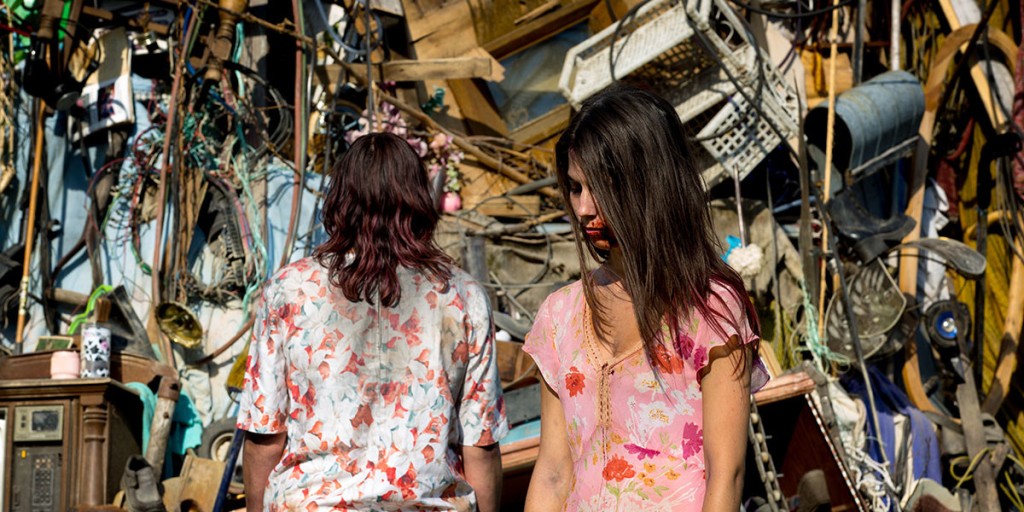
Les affamés by Robin Aubert. Everything you need to know about this is contained in the first two scenes: The first is a field in the middle of nowhere covered in a mist, some figures slowly emerge, Unsettling-Low-Vibration-Noise™ swells. The second begins abruptly with a loud noise, startling you with car engines, then shows a zombie running after and screaming at a victim.
I liked parts of this, like the mound/cairn structures (which in the end constitute the only real horror or mystery to the story), scenes where characters stare out at nothing in the woods, and the pastoral setting (the director apparently used his own ranch and horses). The rest is just an exercise in CGI splatter and gore. The constant zombie yelling became annoying after a while. The attempts at humor weren’t great (though my audience was cackling away so what do I know); I would’ve 86ed the whole arc with the guy in the military uniform because it’s stupid from start to finish.
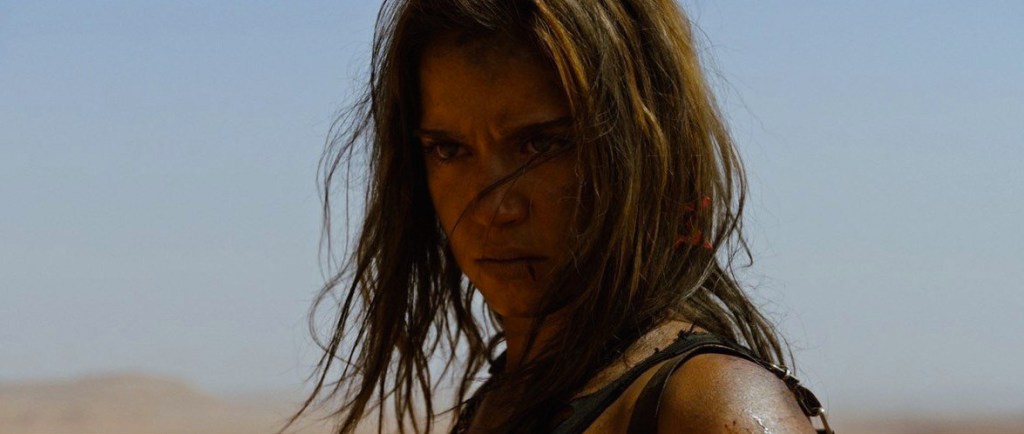
Revenge by Coralie Fargeat. It’s entertaining enough as an exploitation film I suppose. The color schemes are kind of nice, as is the Phoenix/Lazarus imagery (though incredibly on the nose). But genre filmmakers today really need to take their Ritalin and get over this cartoonish MTV aesthetic that still seems to be everywhere even after 15 years. It’s not exciting. It’s boring.
Also, since it’s inevitable that this will come up in conversation: You would think that this film would have distinguished itself somehow in that it was written and directed by a woman (and whoever buys/distributes this commercially will undoubtedly use that to sell it to the public) but that can’t really be the case if the female writer/director apes all the genre conventions/cliches established by and for men -instead of subverting them in some way, in any way. Practically half the film is comprised of shots of the girl’s half-naked body…oh but it’s supposedly ‘feminist’ because instead of simply portraying a scantily-clothed woman, it portrays a “strong”/armed scantily-clothed woman. Retarded.
Again, it’s fine as just straight-up exploitation and delivers on the splatter/gore, but there’s nothing more to it. Just watch Ms. 45 again -that’s the film to beat in this game.
That’s it. Until next time…

